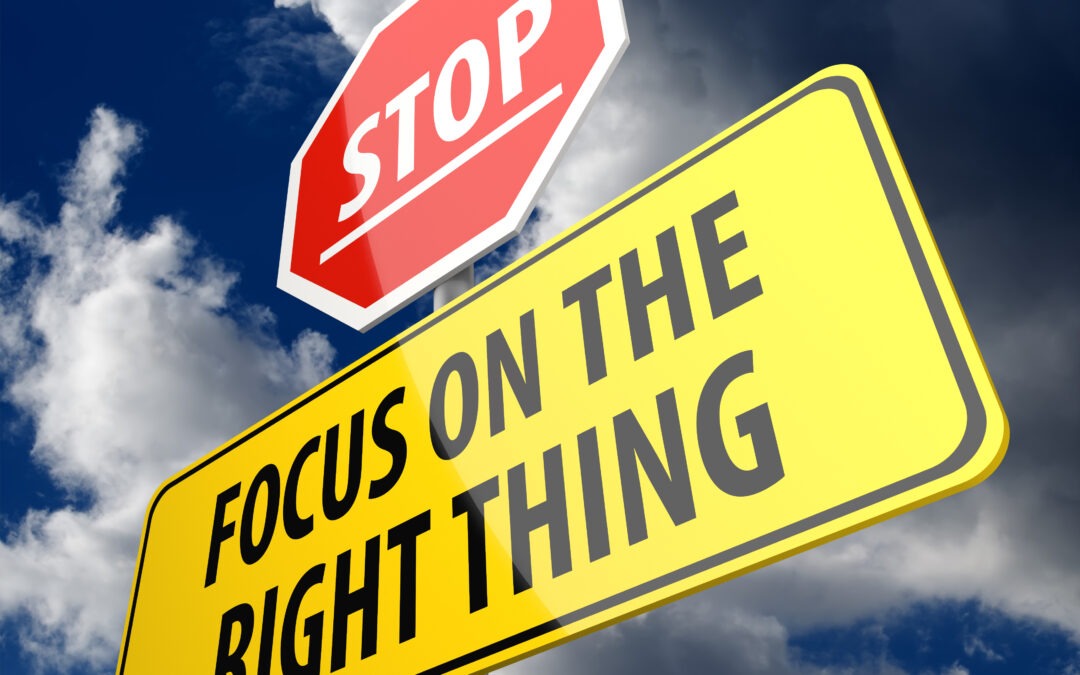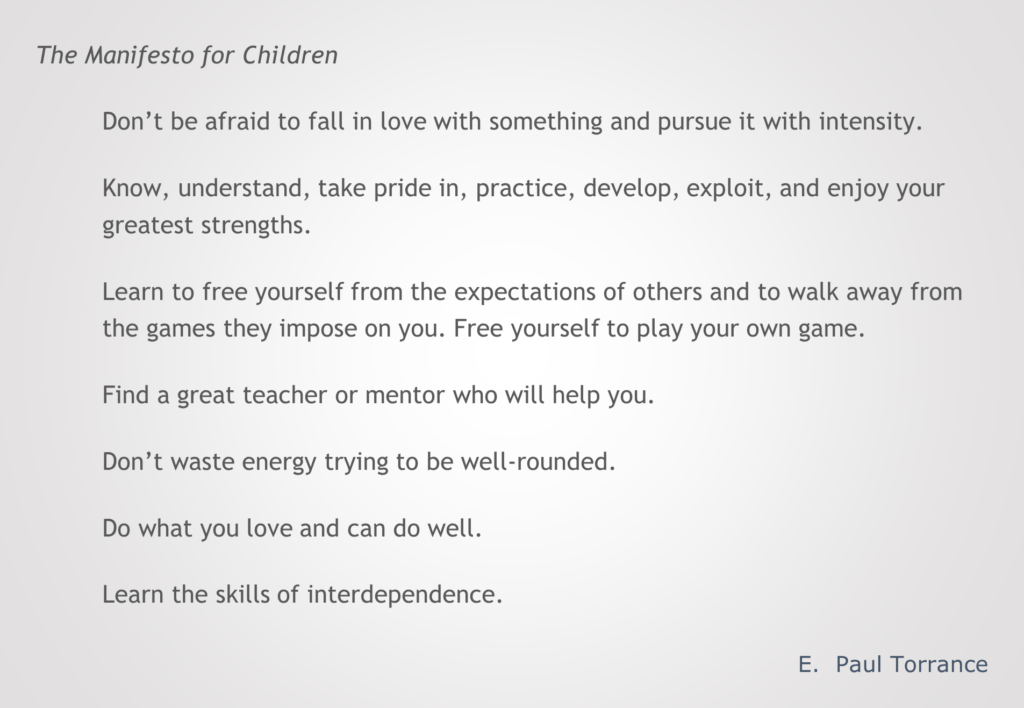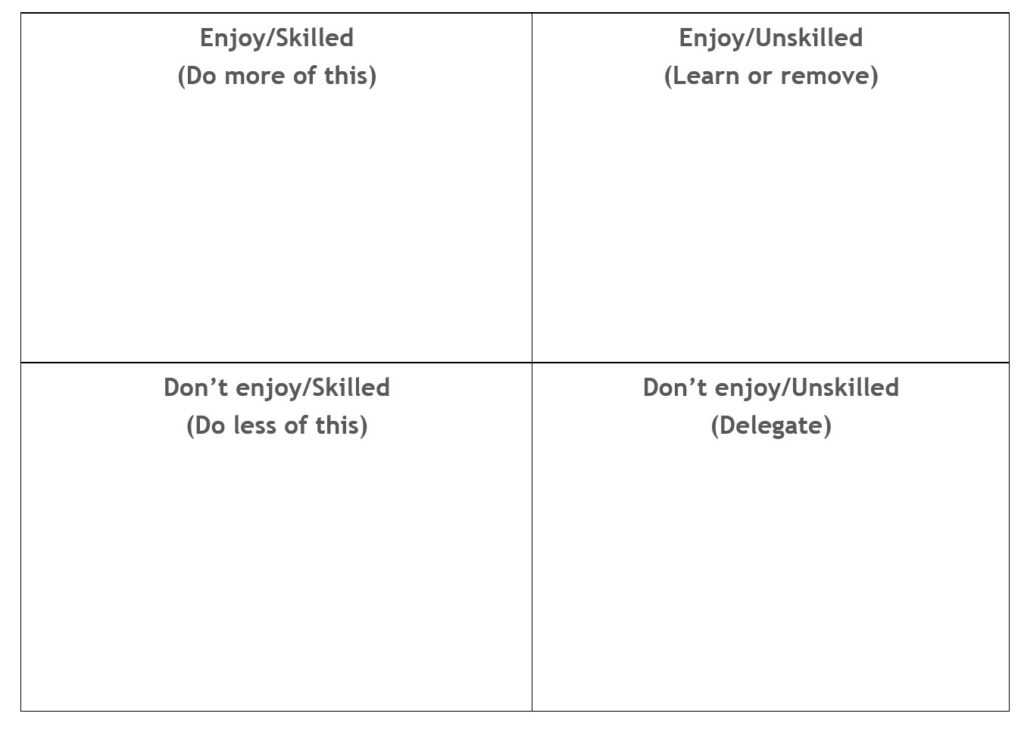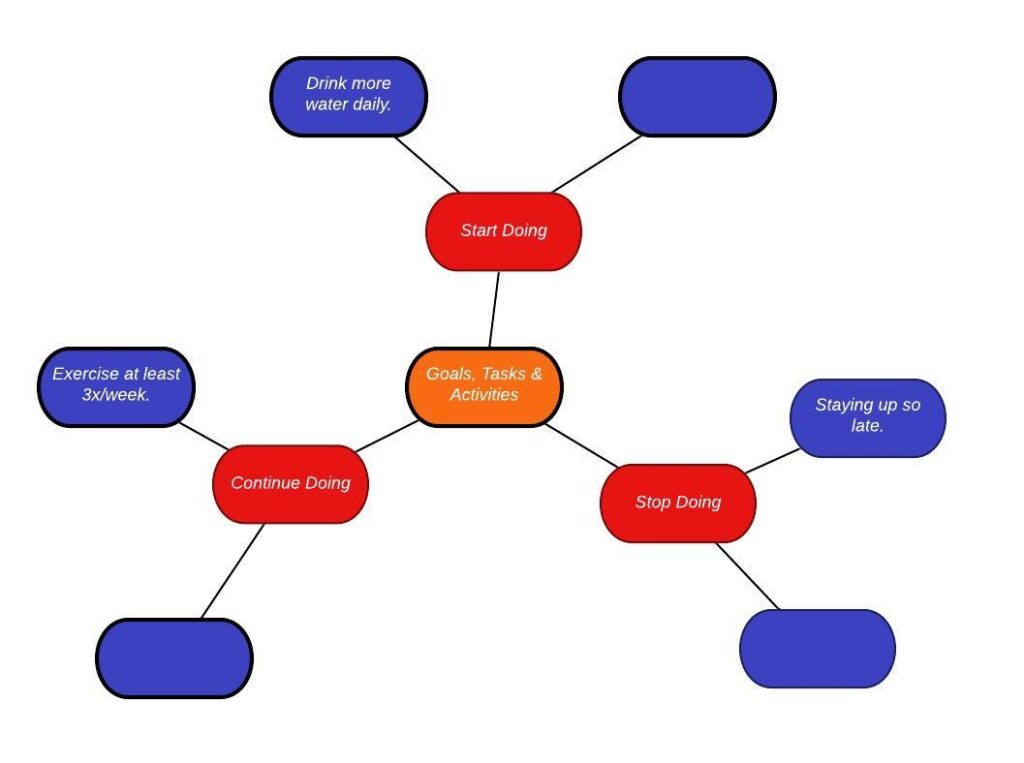
by Lori Vande Krol | Oct 10, 2024 | General Productivity, Habits, Mental Health, Time Management
In the midst of our busy lives, it’s often the smallest interactions that can ground us in the present and remind us of the beauty around us. I walked into a gas station recently, lost in my thoughts. Likely, I was mentally preparing for an upcoming meeting, running the day’s schedule through my mind, or brainstorming resolutions for challenges of my clients, my children, or myself. As I was checking out, the young cashier said, “I like your ring.”
“Thank you” I responded, half-aware. But her comment took me out of my thoughts and back to the present. I looked at her, actually noticed her, and realized she had a very cute hair style with pigtails and color that I could tell took some effort. I continued, “I like your hair.”
“Thank you!” she said. Then, “A nice compliment can go a long way.”
“Yes it can” I replied. In that moment, she not only gave me a reason to smile but brought me back to the present, to be mindful of that exact moment. I left a little lighter and happier. I have been working to be more mindful, more “in the moment,” because I understand how important it is for a happier, healthier life.
Simple Mindfulness Tips
If you often find yourself lost in thought, with lack of focus, or not able to enjoy the small moments, the practice of mindfulness may help. Mindfulness encourages us to reconnect with the present, enhancing our awareness of our surroundings and ourselves. By incorporating simple techniques into our daily routines, we can develop a greater sense of peace and appreciation for the little things in life. Here are some practical tips to get you started on your mindfulness journey:
1. Brain Dump: Clear your mind by doing a brain dump of everything that is distracting you. Choose a quiet space, set a timer for 10-15 minutes and write freely. Don’t worry about grammar, structure, or coherence—just let your thoughts flow. This can include worries, to-do lists, or random ideas.
After the timer goes off, take a moment to review what you wrote. Notice any recurring themes or feelings. This reflection can help you understand what’s on your mind and identify any areas where you might need to focus your attention. Then, make a plan to address them. Creating a habit of clearing your mind with a brain dump can be a powerful way to release mental clutter and create space for mindfulness in your day.
2. Practice: Being intentional and grounded consistently takes practice. One popular grounding method is the 5-4-3-2-1 Technique: Identify 5 things you can see, 4 things you can touch, 3 things you can hear, 2 things you can smell, and 1 thing you can taste. Other methods such as spending a few minutes outdoors, movement and stretching, or mindful breathing may work for you. Techniques such as this can bring you back to the present moment, allowing you to be more focused and mindful of your thoughts and decisions.
3. Reflect: Practice regular reflection and gratitude. One way to do this is to create a daily gratitude journal. Dedicate a few minutes each day, perhaps in the morning or before bed, to reflect on your day. List three things you are grateful for. They can be big or small—anything from a successful project at work to a beautiful sunset.
For each thing you list, take a moment to reflect on why you are grateful for it. Consider how it made you feel, why it matters to you, and the impact it had on your day. This practice not only enhances mindfulness by bringing your focus to the positive aspects of your life but also encourages a deeper understanding of what truly matters to you. Over time, it can help shift your perspective and cultivate a more positive mindset.
Thank you to my cashier that day, for bringing me out of my thoughts and back to the moment I was in. I needed a reminder to stop rushing, thinking, worrying, solving, planning…to notice and enjoy what was around me. Yes, I nice compliment can go a long way.

by Lori Vande Krol | Sep 1, 2021 | General Productivity, Goals and Priorities, Habits, Task and Project Management, Time Management
Recently on a beautiful Sunday afternoon, I decided to join my husband for a bike ride. We filled the tires and water bottles, put on our helmets, and headed out. I felt a little extra resistance while peddling up the hill out of our neighborhood and thought, “Ok, this is hard. I think I just need to warm up.” As we pedaled on, I continued to feel that the ride was much more difficult than I expected. I couldn’t keep up with my husband – it seemed even when he wasn’t peddling he was going faster than me – and I was already out of breath. Thoughts that were going through my head during this time included: “I thought I was in better shape than this.” “I work out more than him…why can’t I keep up?” “Is biking really that different than my regular workout?” “What is wrong with me?”
After over three miles of this, it was time to turn back for home. We stopped so I could catch my breath and get a drink of water and my husband said, “Are you sure there isn’t something wrong with your bike? Maybe your tires?” I responded that it felt like it was riding fine and I didn’t hear any strange noises or rubbing, but let me get off my bike and check just to be sure. Lo and behold, the front brake was snug against the tire. I had basically been riding with the brakes on! After a few minutes, I figured out the problem, fixed it, and we rode home in about half the time it took us to get there – a much more enjoyable ride.
What does this somewhat embarrassing story have to do with productivity?
How many times in your life are you pushing against some sort of friction without realizing it? What could be made easier and more enjoyable if you stepped back and really analyzed, and addressed the issue? Often, we are so engrossed in day-to-day life, information, and tasks that we fail to really consider what we are doing. It is vital that we regularly take time to review and reset. In his book Essentialism: The Disciplined Pursuit of Less, Greg McKeown asks “Is there a point at which doing less (but thinking more) will actually produce better outcomes?” My response is “yes”! And my sore legs would agree.
Below are three simple steps you can take to minimize or alleviate the friction in your life and career.
1. Take Notice
Pablo Picasso said, “Without great solitude, no serious work is possible.” It is important to take focused time regularly to review your actions. Are they intentional? Do they reflect your priorities? Are you in control or are you letting others define your schedule and tasks? Are there processes, projects, or tasks that could be done more efficiently or effectively? A regular review might include the following questions:
- What is going well for me? How can I continue this?
- What do I not enjoy? What are my challenges? What can I stop doing? What can be made simpler?
- What do I most enjoy? What do I look forward to? How can I do more of this? What might get in the way?
This reflection is much easier to do if you are clear on your vision, priorities, and plan. For more on this, see my June 2021 blog, Mastering Time Management: What To Do Before the To Do List.
2. Identify the Issue
When you take focused time to reflect and review your priorities and related actions, it becomes simpler to identify any issues that are holding you back, getting in your way, or causing unnecessary friction. Maybe it’s a process, tool, or system that isn’t working optimally. Perhaps a colleague, friend, or family member is causing tension or stress. Or maybe it’s the position, company, or career you are in. It may even be a medical issue that has been overlooked resulting in lower productivity, and higher stress and anxiety.
If you are reviewing systems and processes for a company or team, identifying issues can entail a full-blown workflow analysis to find areas for automation, unneeded duplication, or improvements to technology, training, and communication. More often though, it just takes quiet, focused thought or journaling to pinpoint obstacles towards reaching your goals. Identify them and write them down.
3. Create Change
How will you minimize or alleviate the issues you have identified above? Consider any resources needed to support the change as well as your own habits or actions that need to change. What will you do differently going forward to reduce the friction or obstacles keeping you from success and enjoyment? Making a full plan for success is great, but sometimes you’ll need to just start with one small action step. Then, take another and another. Change can be hard, but the increased joy and success will be well worth it. And, you will likely reach your goals much quicker than you would have otherwise.
As my husband and I drove our bikes back into the garage, we found our daughter waiting for us to leave for her soccer game. Since the bike ride took much longer than expected, we were almost late. I realized then how much the friction I was working against for the first half of the ride impacted more than just me. It also caused stress for my daughter and potentially her team and coach if we were late. While I wish I would have stopped to evaluate the situation sooner, the fact that I did eventually stop to (1) take notice, (2) identify the issue with the brakes, and (3) create change by working to fix it, allowed for a much more enjoyable ride home, and we arrived at pre-game warm-up just in time.

by Lori Vande Krol | Jan 14, 2021 | Goals and Priorities, Habits, Motivation, Task and Project Management, Time Management
If you are like most creative, driven entrepreneurs and professionals, you have a lot of big goals, fun projects, and life-changing ideas on your plate – not to mention the other day-to-day tasks and activities that take up your time. Without a good process for analyzing, prioritizing, and planning, you can become overwhelmed and frustrated that yet another day – or week – goes by without measurable progress. Here I share 3 ways to address this overwhelm so you can reach your big goals quickly and with more focus and less stress, allowing you to share your passions with the world and have fun at the same time.
Success = Skill + Passion + Hard Work
Paul Torrance, Distinguished Professor, researcher, and developer of the Torrance Tests of Creative Thinking, conducted a 40-year longitudinal study of creative individuals. Based on the results of his study, Torrance developed the Manifesto for Children to guide them as they grow and struggle to maintain their creativity and use their strengths to create careers. While Torrance intended his manifesto for children, I think the guidance applies to adults as well.

Many of us learn these important ideas later in life, or maybe not at all. Torrance hoped to help improve a creative individuals’ chance of success and life fulfillment with his study and manifesto.
Similarly, you will be most successful and be able to help others more when you focus your time and energy on those things you are good at and passionate about. Big goals take hard work and if you don’t have the knowledge and excitement, you will be much less likely to put in the time and effort required. To narrow down the activities you should be spending your time on, draw the following grid on a piece of paper, and divide your ideas, goals, and activities into these categories:

You will want to spend the most time on activities and goals from the top-left “Enjoy/Skilled” quadrant and develop educational or learning goals from the top-right “Enjoy/Unskilled” quadrant. Or, if these activities don’t serve your greater goals, consider removing them. Look at delegating tasks in the bottom half of the grid – those you don’t enjoy – or if possible, remove them. Deleting tasks that don’t serve your greater purpose and goals will open the door for new opportunities.
Determine What To Start, Stop, or Continue Doing
A second exercise that can help you focus on your passions and priorities is the “Start/Stop/Continue” exercise. Write these three words on the top of a piece of paper and list all of those things you would like to start doing, stop doing, and continue doing. If you are a visual person, you might use mind-mapping as a way to brainstorm activities or tasks for each category.

Be realistic when considering your time and energy over the time period considered. This is a great exercise for habit-related activities and goals. For example, in order to have the energy and focus for my big goals, I would like to start drinking more water daily, stop staying up so late, and continue exercising at least 3 days per week.
Find Support and Accountability to Reach Your Goals
Being an entrepreneur, business owner, or leader can be lonely. You want to do great things but may not have someone that understands and shares your passion and drive. Without someone there to communicate your struggles and help get through roadblocks, there may be a loss of momentum or halted progress on your goals. It’s also important to be able to share your excitement when reaching milestones. E. Paul Torrance felt strongly enough about this to include two related items in his Manifesto for Children: “Find a great teacher or mentor who will help you.” and “Learn the skills of interdependence.”
Following are a few different ways you can find this support and assistance:
- An accountability partner. This may be a family member, friend, or colleague, as long as they share your drive and passion and provide the support and encouragement you need through the good and challenging times.
- A mastermind group. The advantage of a formal mastermind group is you have a team of people with different backgrounds, experiences, and skillsets as you work to set and reach your goals. For the best chance of success, I would recommend a paid group with an experienced leader/host.
- A business, life, or productivity coach. Sometimes it makes the most sense to hire a coach to help you get clear on your passions, strengths, and goals and then to help you develop the plan to reach those goals. This person should provide motivation and accountability, be a sounding board as you work through challenges and offer solutions to keep you moving, and be your greatest cheerleader when things go well.
The world needs your big ideas – your book, your product, your new business, your knowledge, your energy, your talent. What will you do to ensure you prioritize, focus, and take action so you can reach your biggest goals?
More blogs related to Priorities, Goal-Setting, and Planning:
Get Unstuck with a Simple Project Plan
Create Your Top 10, and Bottom 10, List
The Superman: Goal Achieved







Recent Comments